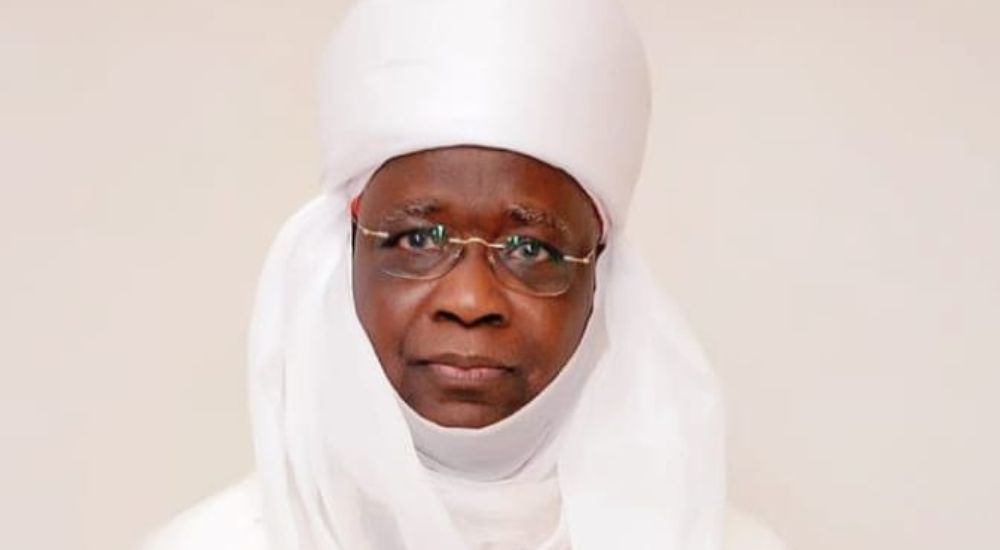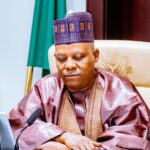FEATURE: BRICS Expansion: A New Era Of Global Cooperation?
Amid a seismic shift in global politics and economies, the South is ushering in a new era of collaboration. Once a minor participant on the global scene, 51 nations are vying to become founding members of the BRICS alliance, which consists of South Africa, Brazil, Russia, India, and China.
The five main emerging national economies of Brazil, Russia, India, China, and South Africa are together referred to as BRICS. Economist Jim O’Neill of Goldman Sachs originally used the phrase in 2001 to draw attention to the developing economies of these nations.
Brazil, Russia, India, and China convened their first BRICS summit in Yekaterinburg, Russia, in 2009. A year later, South Africa joined the group. Until South Africa joined in 2010, the organization was known as “Bric”; after that, it became “Brics”.
On 1 January 2024, the BRICS group (Brazil, Russia, India, China and South Africa) was expanded to include four new countries. The BRICS alliance currently consists of nine member states: Brazil, Russia, India, China, South Africa, Egypt, Ethiopia, Iran, and the UAE.
WHO is behind BRICS?
The BRICS nations are a diverse group of countries, each with their unique strengths, challenges, and leaders. Here’s a brief overview of the key players:
Brazil:
President: Luiz Inácio Lula da Silva
Economy: Largest in Latin America, driven by agriculture, mining, and manufacturing
Russia:
President: Vladimir Putin
Economy: Driven by energy exports, military industry, and strategic trade partnerships
India:
Prime Minister: Narendra Modi
Economy: Rapidly growing, driven by IT, pharmaceuticals, and services
China:
President: Xi Jinping
Economy: World’s second-largest, driven by manufacturing, technology, and infrastructure development
South Africa:
President: Cyril Ramaphosa
Economy: Most developed in Africa, driven by mining, finance, and tourism
These leaders and their governments have played a significant role in shaping the BRICS alliance, driving its agenda, and promoting cooperation among member nations.
The BRICS nations are characterized by their:
Large populations (comprising over 40% of the world’s population)
Rapid economic growth (with a combined GDP of over $20tn)
Increasing global influence (in politics, trade, and culture)
Diverse geography (spanning across Asia, Africa, Europe, and the Americas)
Shared goals (such as promoting economic development, social justice, and political cooperation)
WHY BRICS?
The BRICS alliance was formed to address several key challenges and opportunities faced by its member nations. The group was designed to bring together the world’s most important developing countries, to challenge the political and economic power of the wealthier nations of North America and Western Europe.
Brics countries include major world powers, such as China and Russia, and countries which are influential on their continent, such as South Africa and Brazil. The expanded group has a combined population of about 3.5 billion, or 45 per cent of the world’s inhabitants, and combined, members’ economies are worth more than $28.5tn – about 28 per cent of the global economy, according to World Bank data released in 2022.
Before its expansion in 2024, BRICS boasted impressive figures, representing more than a quarter of the world’s GDP, over 16 per cent of international trade, 30 per cent of the land area and over 40 per cent of energy production. With Iran, Saudi Arabia and UAE as members, Brics countries produce about 44 per cent of the world’s crude oil, as shown by data from the Energy Institute in 2023.
However, the group argues that Western nations dominate important global bodies such as the International Monetary Fund and the World Bank, which lend money to governments. It wants to see a “greater voice and representation” for emerging economies.
In 2014, the Brics nations set up the New Development Bank to lend money to boost infrastructure. By the end of 2022, it had provided nearly $32bn to emerging nations for new roads, bridges, railways and water supply projects.
This is China’s main aim for Brics, according to Prof Padraig Carmody from Trinity College Dublin.
“Through Brics, China is trying to grow its power and influence – especially in Africa,” he says. “It wants to be the leading voice for the global south.”
The other major world power in the group has a different purpose:
“Russia sees [Brics] as part of its fight against the West, helping it to overcome the sanctions imposed after the invasion of Ukraine,” says Creon Butler of the London-based think tank Chatham House.
The BRICS alliance aims to:
Foster economic cooperation and development
Promote political dialogue and diplomacy
Enhance global governance and multilateralism
Support social development and cultural exchange
Officially Invited:
Saudi Arabia and four other nations were invited in August 2023 to become members with effect from 1 January 2024. South Africa’s Foreign Minister Naledi Pandor had said in January that the kingdom had joined the grouping.
He said during a news conference: “Concerning the BRICS confirmations, five out of the six have confirmed. That is Saudi Arabia, UAE, Ethiopia, Iran … and Egypt.”
However, Saudi Arabia has not yet officially joined the BRICs bloc of developing countries, the kingdom’s minister of commerce, Majid Al-Kasabi said in a panel at the World Economic Forum in Davos that “Saudi Arabia has been invited to attend BRICs, we have not yet officially joined BRICs.”
Saudi Arabia has yet to officially join but participates in the organisation’s activities as an invited nation.
Argentina was also invited to join, but President Javier Milei pulled out in December 2023, shortly after taking office. He said that although he did not consider it “appropriate” for Argentina to become a full Brics member, he was still committed to strengthening bilateral ties, particularly to increase trade and investment flows.
The expansion of BRICS in 2024 has been described as a new era of global cooperation, as it has increased the group’s global economic and political weight and established it as a major force in global economic governance.
On January 9, 2024, Member of the Political Bureau of the CPC Central Committee and Foreign Minister Wang Yi said at the Symposium on the International Situation and China’s Foreign Relations in 2023 that during China’s chairmanship in 2022, President Xi Jinping called on fellow BRICS countries to pursue development with open doors and boost cooperation with open arms, and appealed for admitting new members to pool greater strengths.
With the unanimous consent of all members, the BRICS expansion process was launched in the China Summit year. After a year of preparation and consultation, leaders of the five BRICS countries made a political decision on expansion at the Johannesburg Summit in 2023 and officially welcomed new members to the BRICS family.
Twenty-five countries have officially applied for BRICS membership, including Algeria, Azerbaijan, Bahrain, Bangladesh, Belarus, Bolivia, Cuba, Kazakhstan, Kuwait, Malaysia, Pakistan, Palestine, Senegal, Thailand, Turkey, Venezuela, Yemen, Zimbabwe, Sudan, Tunisia, Uganda, Colombia, El Salvador, Nicaragua, and Peru.
Twenty-six countries have expressed interest in joining BRICS, including Angola, Cameroon, Central African Republic, Congo, Republic of the Congo, Ghana, Nigeria, South Sudan, Afghanistan, Indonesia, Iraq, Laos, Myanmar, Sri Lanka, Syria, Vietnam, and others. These countries are attracted to BRICS’ goals of promoting economic cooperation, political dialogue, and social development among emerging economies.
Dominated economically by China, which accounted for more than 70 per cent of the alliance’s output, the group saw India contributing roughly 13 per cent, while Russia and Brazil each added about 7 per cent, and South Africa, 3 per cent. The advent of the BRICS+, with new heavyweight oil producers onboard, not only elevates its share to nearly 36 per cent of the global GDP and from 41 per cent to over 45 per cent of the world’s population but also boosts its stake in global oil production to more than 42 per cent.
One should note that this expansion poses a potential challenge to the hegemony of the U.S. dollar in oil markets, especially if the BRICS+ opts for trading oil in alternative currencies. This shift could significantly undermine the longstanding “petrodollar” system, a foundational element of the dollar’s global dominance, especially considering Saudi Arabia’s pivotal role in this financial architecture for decades.
BRICS+ carries significant demographic and economic weight, accounting for nearly half the world’s population (46 per cent, up from 41 per cent for BRICS) compared with just under 10 per cent for the Group of Seven (G7): United States, Canada, Japan, United Kingdom, Germany, France and Italy. BRICS already accounted for a larger share of world GDP than the G7, and the expansion has increased this share to over a third (35.6 per cent in 2022). China still holds the dominant position within the group, however, accounting for 52 per cent of its total GDP (at PPP), which is similar to the United States’ weight within the G7.
The gap between BRICS+ and the G7 is set to widen further thanks to robust economic growth in emerging countries: according to forecasts by the International Monetary Fund (IMF), BRICS+ will account for 37.6 per cent of world GDP at PPP in 2027, compared with 28.2 per cent for the G7.
FEATURE: BRICS Expansion: A New Era Of Global Cooperation? is first published on The Whistler Newspaper





